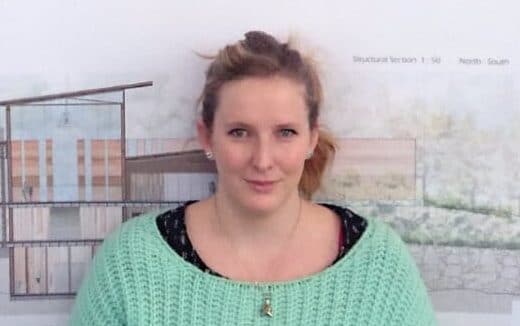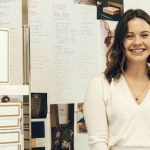Harnessing the Strengths
Making the most of your strengths is often a key part of the success story for a young person with dyslexia. Alisha Moser hated school but specialised SPELD tuition helped her develop strategies as a visual learner and eventually train as an architect and become an author.
Every Sunday afternoon, Alisha recalls feeling miserable at the thought of another school week ahead.
“At primary school, I felt out of sync in the classroom. Verbal teaching methods never worked for me and I couldn’t answer basic questions,” she says. “I was always in the bottom group for everything, even though I worked just as hard as everyone else.”

While Alisha remembers feeling a strong sense of inadequacy in the classroom, she excelled naturally at anything that required creativity.
“My favourite subject was technology and I used to look forward to those two periods a week,” she recalls.
A SPELD assessment confirmed Alisha was dyslexic but it was more of a disappointment than a relief.
“I remember coming home to Mum and crying because, despite the diagnosis, I still believed I was dumb. No test could change how I felt at that time. It was like a sentence not a diagnosis.”
I often excel at bizarre things. I think right out of the box and come up with quite novel ideas.
Unlocking the potential
One-on-one tutoring helped Alisha to understand her learning style and develop strategies she could take to high school. She discovered that she was a visual learner and her SPELD teacher taught her to seek out and create diagrams, reading notes and information on the content to take advantage of her visual memory.
“She was a brilliant tutor and I can’t praise or thank her enough. She also went out of her way to find books she thought I would genuinely enjoy and was successful at ‘tricking’ me into reading. Eventually I fell in love with all literature.”
At high school, Alisha chose subjects she enjoyed: hard materials tech, design, graphics, history, classics and biology. The latter three required significant reading and recall of facts, which Alisha managed by studying diagrams and picturing dates and timelines in her mind. But it was design, with its visual focus and creativity that Alisha enjoyed the most.
“I loved playing with Lego and could easily picture three-dimensional space. The construction of buildings fascinated me, and a teacher said they could see me being an architect. It was an easy decision, really.
A moment of self-doubt
“I remember finding out I’d been accepted into architecture and crying at the letterbox because I had convinced myself I wasn’t good enough,” she says. “My work ethic in school had been extremely high, and all I’d ever received was average results.”
Architecture studies involve a lot of reading and writing. Self-belief helped Alisha cope and get passing grades. Submerging herself in the world of architectural writing saw her own writing improve.
“I began to receive ‘A’ grades, and for the first time ever I felt confident in my writing abilities,” she says. “This was something I could never have imagined as a 12-year-old crying to Mum that I was ‘dumb’.”
Completing her thesis with an ‘A’, Alisha graduated with a Master of Architecture with honours. She is now a qualified building surveyor.
Now, one of Alisha’s biggest passions is literature and writing. Her work has been selected for publication in two books: 10 Stories: writing about architecture – 3 & 4.
“I absolutely have further writing ambitions. I would love to see myself in the future as a novelist who makes a living from writing.”
Gift or curse?
So, given the option, would Alisha choose not to be dyslexic?
“Through tutoring and discovering my strengths, I was able to become an average student, like everyone else. As an adult, it doesn’t make much difference, although I often excel at bizarre things. I think right out of the box and come up with quite novel ideas.
“Life isn’t fair and people suffer far worse afflictions than learning disorders. Dyslexia makes me the person I am. If I wasn’t dyslexic, I wouldn’t be me anymore.”






